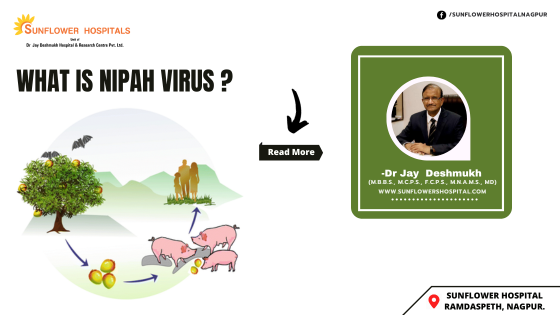How is Nipah transmitted?
Contact with infected animals, such as bats or pigs, or their body fluids such as blood urine, and saliva cause transmission. Consuming food products mixed with the bodily fluids of infected animals, for example, palm sap or fruit tainted with an infected bat, can transmit the infection.
What are the clinical features of the Nipah virus?
Symptoms occur 4 to 14 days following exposure to the virus. Initially, there would be simply a cold, cough and fever, sore throat, and difficulty in breathing. A phase of encephalitis that is swelling of the brain due to infection may follow. After this, disorientation, drowsiness, and mental confusion occur. This may rapidly progress to coma in one to two days. Death may occur in 40 to 75% of cases. Dormant or la-tent infections are known many months or years after exposure to the virus. Long-term side effects include persistent convulsions and personality changes.
Why has the detection of only two cases led to such concerns?
Though the virus does not spread as rapidly as influenza or Covid virus, it is very dangerous as the case fatality rate is very high. The proportion of deaths in infected individuals is very high.
What can we do to protect ourselves?
Cases if confirmed indicate only a local outbreak as per Dr Sreekumar from Kerala. People in the area where the cases were detected should refrain from coming in close contact with family members and other contacts. During the previous outbreak in Kerala, the government suggested precautions like thoroughly, Nipah virus is known as a zoonotic virus. This is known to get transmitted from animals to human beings. It can occur through contaminated food or direct contact with infected individuals and their secretions. Experts warn that there is a risk of human-to-human transmission. Wash the fruits and peel them before consumption. Fruits with signs of bat bites should be discarded. Palm sap and juice should be boiled before consumption.
What is the treatment?
There is no specific treatment or vaccine available for either people or human beings. The primary treatment is only supportive. There is an urgent need for accelerated research and development in this area.
Which animal is a natural host of the virus?
Fruit bats are the natural hosts. There is no apparent disease in the fruit bats. Outbreaks of the Nipah virus in pigs and other domestic animals such as horses, goats sheep cats, and dogs were reported during the initial Malaysian outbreak in 1999.
How is the diagnosis made?
Initial symptoms and signs of the Nipah virus are non-specific. This creates challenges in outbreak detection and effective and timely infection control measures. The main tests are RT-PCR from body fluids and antibody detection by ELISA. Others are PCR assays and virus isolation by cell culture. These samples are sent to National Virology Institute, Pune. Since the outbreak of the Nipah virus in Kerala a few days ago, it has rung alarm bells with the health authorities. This marks the fourth occurrence of the Nipah virus in Kerala since 2018 when it claimed 21 out of 23 lives that were infected.
Author: Dr Jay Deshmukh
Dr Jay Deshmukh is Chief Physician and Director, Sunflower Hospital, Nagpur Honorary Physician to Honorable Governor of Maharashtra and PondicherryCentral. Dr Jay Deshmukh is an M.B.B.S., M.C.P.S., F.C.P.S., M.N.A.M.S., MD From Internal Medicine – Bombay and New Delhi.


